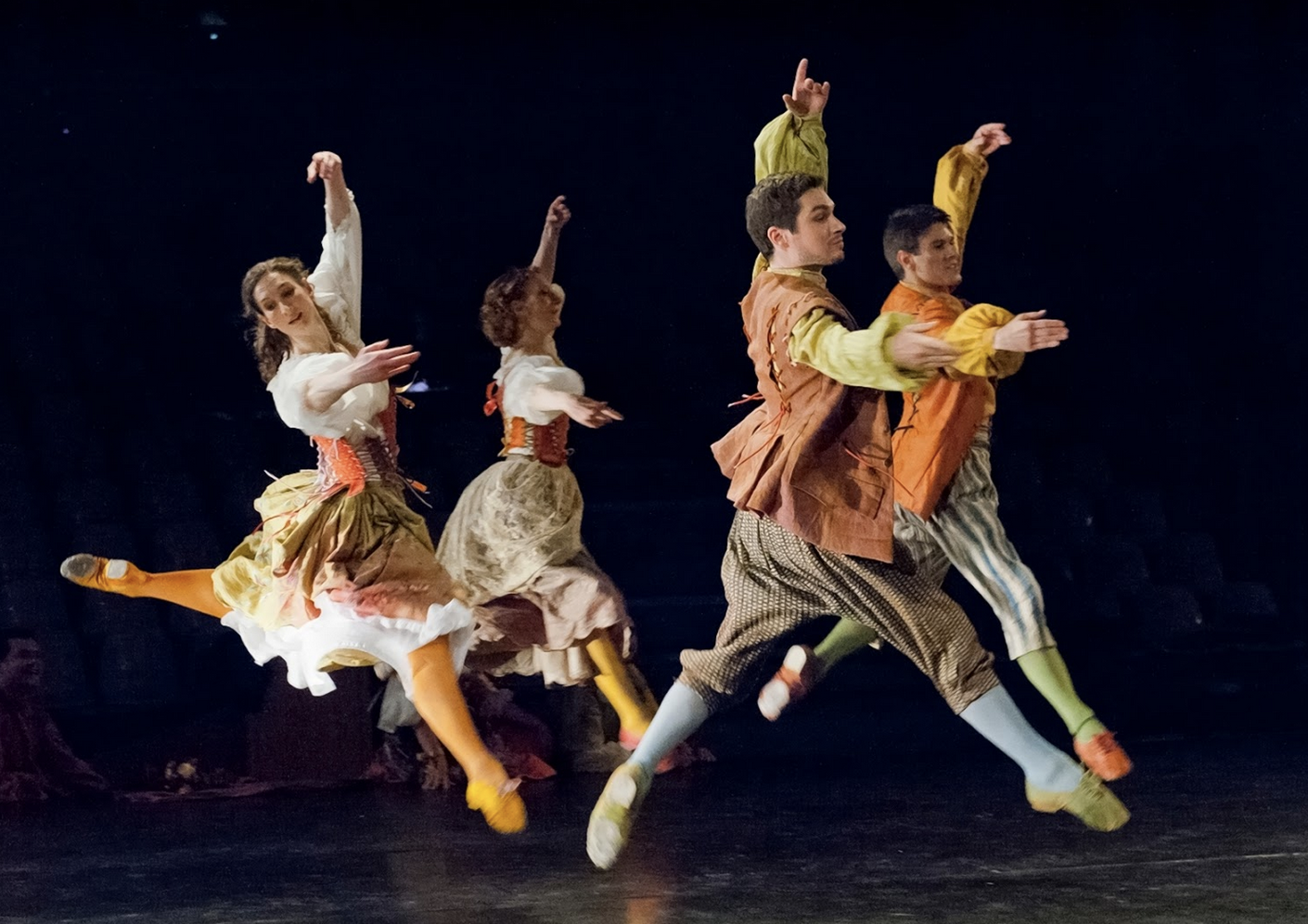If you think opera is a dated artform, try French baroque actes de ballet. A genre designed to cater for the Terpsichorean enthusiasms of the Sun King, their scanty plots were designed to titillate the court with maximum dancing and minimal plot, but with the potential for a bit of Royal propaganda thrown in. Jean-Philippe Rameau was an undisputed master of a musical ritual that now seldom sees the light of day, being more generally consigned to the realm of the recording studio (where, incidentally, shorn of their visuals they can seem even slighter fare).
 Rameau, Maître à Danser at BAM. Photo © Richard Termine
Rameau, Maître à Danser at BAM. Photo © Richard Termine
William Christie is an actes de ballet enthusiast from way back and an old hand with Rameau, which explains why his 2014 staging of Daphis et Églé in a double bill with La Naissance d’Osiris has proved a hit worthy of several further outings over the years. This was its US premiere, a revival that abounds in charm and musical felicities, though not without the occasional longueur.
Did I mention that the plots were slight? Try Daphis et Églé: boy and girl are surprised that the god of friendship finds fault in their relationship only to be delighted when Cupid identifies their feelings as a bad case of love. Or La Naissance d’Osiris: boy and girl have baby, everyone dances. Coming in at nearly two hours of music, thank the lord for the late Françoise Denieau’s poised, lively choreography (deftly re-staged here by Gilles Poirier), Christie’s sure hand on the musical tiller and Rameau’s scintillating dance music.
The first act (Daphnis) assembles a rural community of pretty countryfolk come to celebrate the lovers’ induction into the Temple of Friendship. Sophie Daneman’s simple yet effective direction calls for minimal props but plenty of mimed business on a bare stage scrupulously designed and lit by Christophe Naillet. Alain Blanchot’s painterly costumes are a feast for the eyes. The integration of acting, song and dance is seamless with most singers able to move and most dancers able to sing (at least in chorus).
Christie and the 24 or so players of Les Arts Florissants are placed behind the action, which at times proves acoustically frustrating in such a cavernous venue as the Howard Gilman Opera House where you would ideally like to hear a little more of Rameau’s gorgeous orchestrations. The upside is that the singers come over loud and clear, tenor Reinoud Van Mechelen’s sleek yet potent, haute-contre as Daphnis and Élodie Fonnard’s clear, bright soprano as Églé are a particular delight. Magali Léger makes a charming Amour, with Cyril Costanzo a fine, shaman-like High Priest.
 Rameau, Maître à Danser at BAM. Photo © Richard Termine
Rameau, Maître à Danser at BAM. Photo © Richard Termine
The dance music is the strongest element of Rameau’s score and Christie’s featherlight touch gives it an irresistible swing. Babbling flutes and oboes, tasteful percussion and François Lazarevitch’s deliciously pungent musette lend an appropriate whiff of nymphs and shepherds to the proceedings. Van Mechelen’s rapturously sung Oiseaux, chantez with trilling flutes and added bird calls rounds off the first half to perfection.
Despite its fine, bustling overture, La Naissance d’Osiris is a tougher nut to crack. Daneman’s idea that Églé is now pregnant and will produce her baby on cue (she goes into labour in the midst of a Jovian thunderstorm) is a neat conceit, and the High Priest of Jupiter as a hand-washing midwife complete with medical bag is jolly, but the piece is still wafer thin when it comes to storyline and I’m not convinced that the vocal music is all top-drawer Rameau. The singers in the second half were also less compelling, Léger and Sean Clayton both a little vocally bland as the rustic lovers, while François Lis’ authoritative and noticeably ripped Jupiter had a few uncomfortable moments. The ensuing love games felt overlong and consisted of little more than stirring the dramatic pot.
 Rameau, Maître à Danser at BAM. Photo © Richard Termine
Rameau, Maître à Danser at BAM. Photo © Richard Termine
Fortunately, the dancing is on hand once again to leaven the load with a series of charming (that word again…) pas de trois and a vigourous standout solo from Bruno Benne. Bringing the musette onstage for the final promenade was a nice touch, before Christie lifted the lid on the final spirited tambourin. The much-anticipated baby Osiris, by the way, was meant at the time to signify the future Louis XVI. If you can imagine celebrating Meghan Markle’s safe delivery with a Royal Command Performance of jolly song and dance you’ll get the picture… maybe.
Rameau, Maîre à Danser is at BAM until March 3













Comments
Log in to join the conversation.